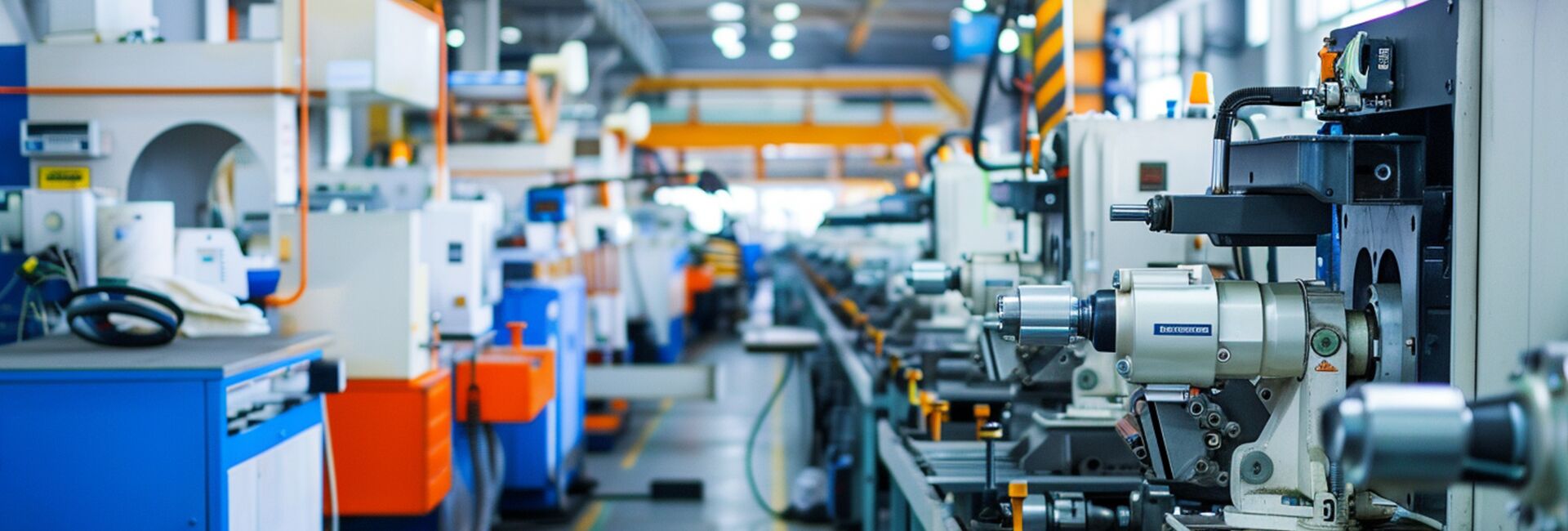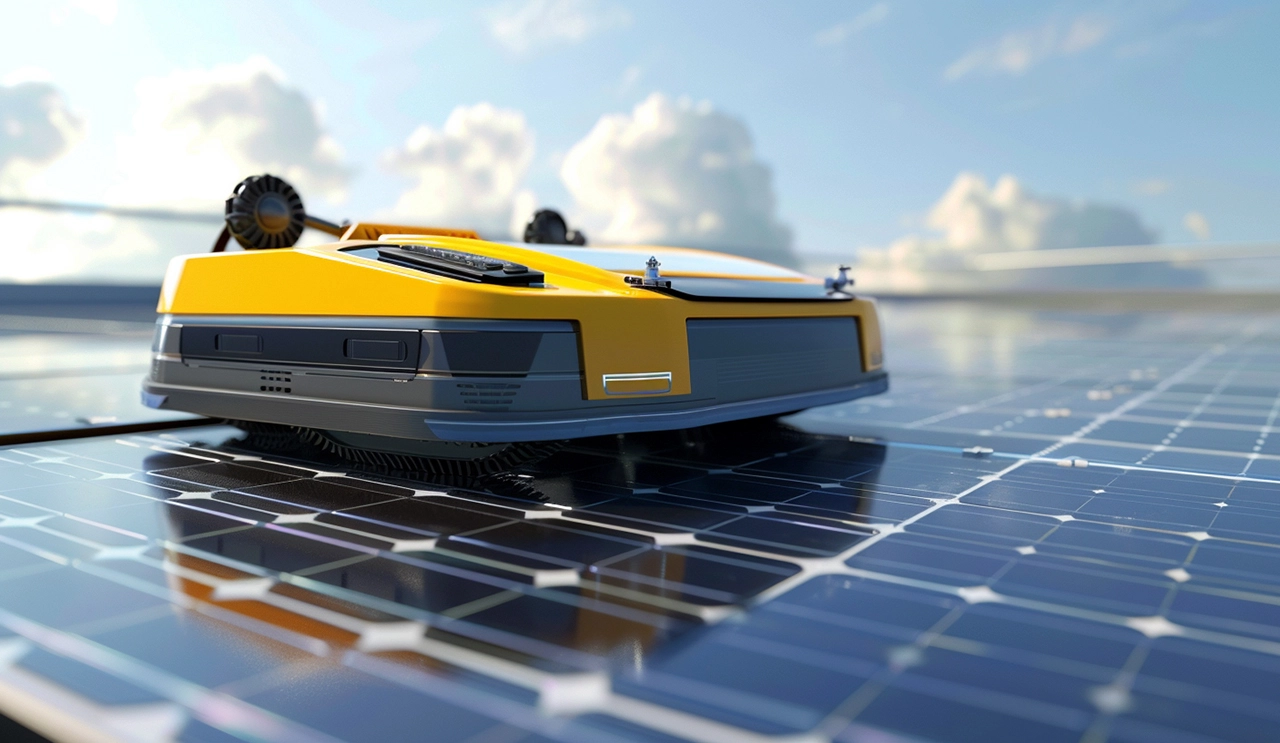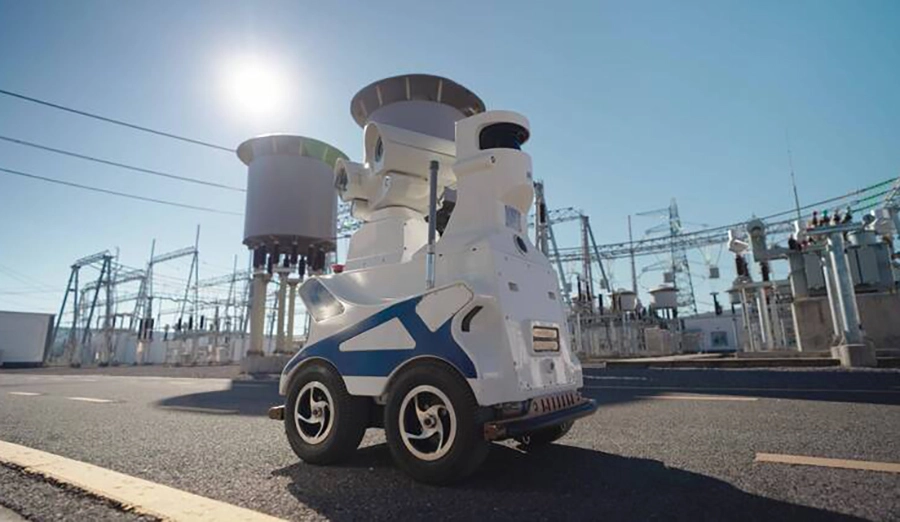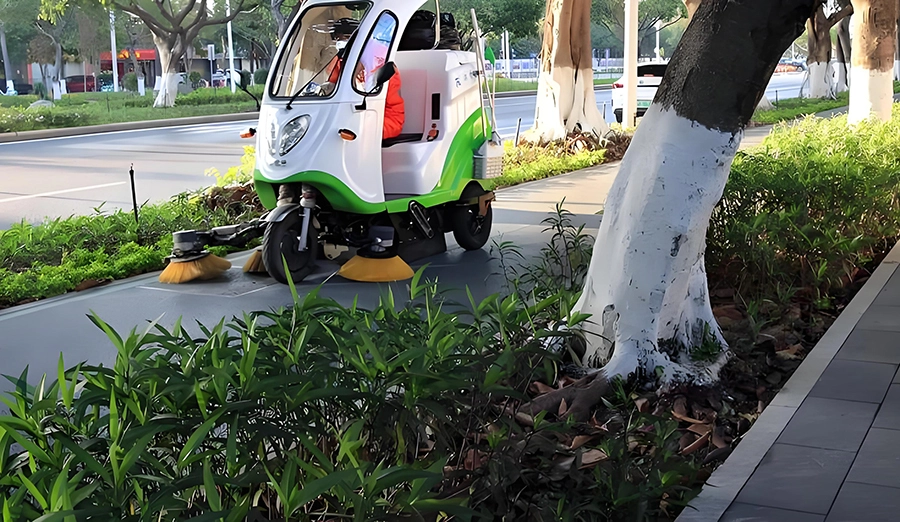
WIRELESS CHARGING IN THE NEWS
In the sun-scorched Gobi Desert, a blue ocean of photovoltaic panels is converting solar energy into electricity. But you may not know that for every 0.1 mm of dust accumulated on the surface of these photovoltaic panels, the power generation efficiency will drop by 6%. Traditional manual cleaning is not only inefficient, but also has the risk of high-altitude operation, which makes photovoltaic cleaning robots gradually become the "star products" in the field of new energy. These intelligent devices have formed different technical schools according to different working environments and technical characteristics.
The most common rail robots are like "little trains" on photovoltaic arrays that move at constant speed along a pre-laid track, removing stubborn stains with a rotating nylon brush and spray system. This design is particularly suitable for standardized components of centralized PV plants, where a single unit can clean up to 20 MW of installed capacity per day. However, in the face of complex terrain of mountain power stations or color steel tile roofs, wheeled robots with off-road properties will show their skills. Equipped with non-slip tires and gyroscopic balancing systems, they operate stably even on slopes of 35 degrees and flexibly navigate irregular component gaps.
In special scenarios such as fishing and light complementation, waterproof robots show unique advantages. This type of equipment is designed with a hull seal and anti-tangle bristles at the bottom, which can both clean bird droppings on the photovoltaic panel and pick up floating aquatic plants. What is more amazing is the magnetic robot, which is firmly adsorbed on the surface of the color steel tile roof like a gecko, and achieves displacement by alternately moving the magnetic wheel before and after, perfectly solving the problem of the traditional equipment's load-bearing limitation on the thin roof.
With the advancement of technology, cleaning robots began to carry more "black technology". Some high-end models are equipped with a visual recognition system, which can automatically identify different pollutants such as bird droppings and oil pollution, and intelligently adjust the cleaning force. In northwest China, where sandstorms frequently occur, robots with self-cleaning functions are being used on a pilot basis - they automatically shake off sand particles in their bristles after completing tasks to avoid secondary pollution. In the desert power station where water resources are scarce, the waterless cleaning robot generates negative ions by ionizing air, and achieves "zero water consumption" cleaning with microfiber cloth.
The changes brought about by these smart devices go beyond efficiency. In a 200-megawatt photovoltaic power station in Ningxia, the average annual power generation increased by 11% after robot cleaning, equivalent to an additional 20 million degrees of green electricity output per year. More noteworthy is the trend of technology convergence: 5G remote control allows engineers to command robot formations from thousands of miles away, and AI algorithms optimize power plant operation and maintenance plans by analyzing clean data. In the future, with the breakthrough of flexible robotic arm, photovoltaic panel self-cleaning coating and other technologies, this wisdom contest on light and dust will stage more innovative chapters. When you are enjoying clean energy, perhaps it is these tireless "clean guards" that silently guard the value of every ray of sunshine.







